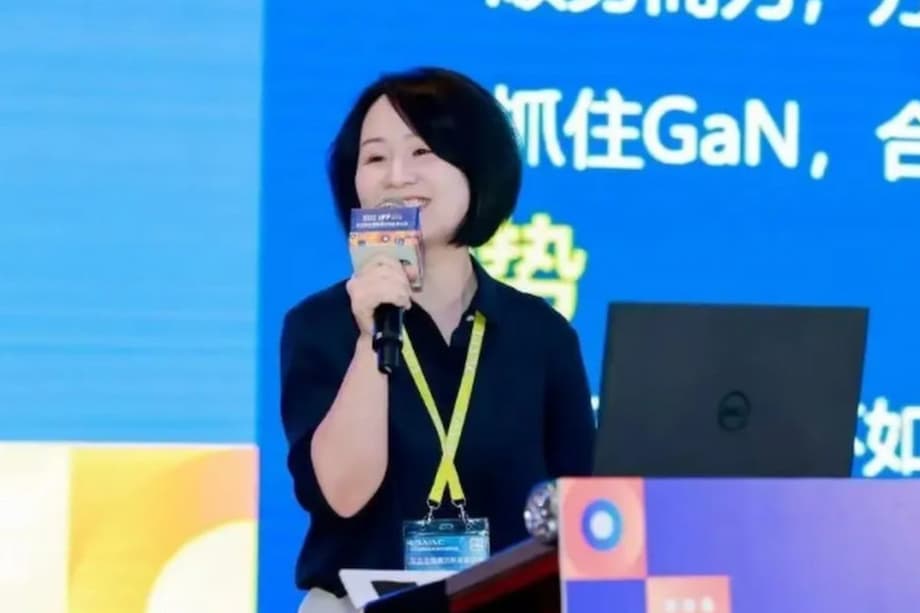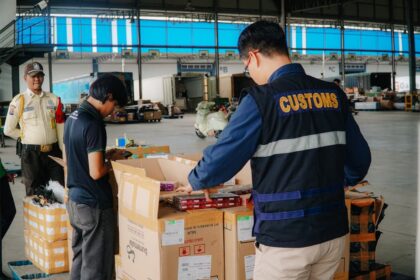Introduction: A New Power in the Chip Race
In the global contest for technological supremacy, few stories are as compelling as that of Dr. Luo Weiwei and her company, Innoscience. Once a NASA scientist, Luo has become a central figure in China’s push for semiconductor self-reliance, leading a company that is now the world’s largest dedicated manufacturer of gallium nitride (GaN) power devices. As the United States and China decouple on advanced chip technology, Innoscience’s rise—marked by its selection as a supplier for Nvidia’s next-generation AI data centers—signals a seismic shift in the semiconductor landscape.
- Introduction: A New Power in the Chip Race
- Who is Luo Weiwei?
- What is Gallium Nitride (GaN) and Why Does it Matter?
- Innoscience’s Breakthroughs: From 8-Inch Wafers to Global Leadership
- Innoscience and Nvidia: A Strategic Partnership
- Industry Alliances and Global Expansion
- Legal Battles and Market Challenges
- IPO and Corporate Structure
- Innoscience’s Vision: The “Chip Era” of Power Electronics
- Broader Implications: China’s Bid for Tech Self-Reliance
- In Summary
Who is Luo Weiwei?
Dr. Luo Weiwei’s journey is remarkable. With a PhD in applied mathematics from Massey University, she spent 15 years at NASA, advancing aerospace technologies and building a reputation as a leading scientist. In 2015, Luo returned to China, founding Innoscience in Zhuhai with a bold vision: to make China a leader in the next era of power electronics by betting on GaN, a material with the potential to revolutionize the industry.
Her decision was both strategic and patriotic. As the U.S. tightened restrictions on chip exports to China, Luo saw an opportunity to fill the gap and drive innovation from within. Today, she serves as Innoscience’s chairperson, guiding its rapid ascent in a fiercely competitive market.
What is Gallium Nitride (GaN) and Why Does it Matter?
Gallium nitride is a wide bandgap semiconductor material that offers several advantages over traditional silicon. GaN devices can operate at higher voltages, frequencies, and temperatures, making them ideal for applications demanding efficiency and power density—such as AI data centers, electric vehicles, and renewable energy systems.
Compared to silicon, GaN delivers:
- Up to 15 times lower turn-off losses
- Three times lower turn-on losses
- Higher switching frequencies, enabling smaller, lighter, and more efficient systems
- Lower energy consumption and reduced CO2 emissions
These properties are transforming power electronics, allowing for more compact designs, automated manufacturing, and standardized performance. As Dr. Luo explained at the IPF 2025 Conference, “GaN technology is essential to improve electronics, creating smaller and more efficient systems which save electric power, lower cost, and reduce CO2 emissions.”
Innoscience’s Breakthroughs: From 8-Inch Wafers to Global Leadership
Innoscience’s most significant achievement is its pioneering mass production of 8-inch silicon-based GaN wafers—a leap that increased chip output by 80% and cut unit costs by 30% compared to the industry-standard 6-inch wafers. This breakthrough positioned Innoscience as the only company globally capable of producing a full voltage spectrum of GaN products at industrial scale.
Operating under the Integrated Device Manufacturer (IDM) model, Innoscience controls every stage of the process: chip design, wafer manufacturing, packaging, and reliability testing. This vertical integration allows for rapid innovation, high yields (exceeding 95% as of late 2024), and resilience in the face of supply chain disruptions.
By 2024, Innoscience’s monthly GaN wafer production capacity reached 13,000 wafers, with production bases in Suzhou and Zhuhai. Its products are used in consumer electronics, wind power, industrial automation, automotive electronics, and especially in AI data centers—an area where demand for efficient, high-power chips is surging.
Innoscience and Nvidia: A Strategic Partnership
In August 2025, Nvidia named Innoscience as its sole Chinese supplier for the advanced 800 VDC power architecture powering next-generation AI data centers. This move drew global attention, as Nvidia is a bellwether for the AI hardware industry. Innoscience’s third-generation GaN devices provide a comprehensive power supply solution for Nvidia, covering voltages from 15 V to 1200 V.
While the partnership is still in the testing phase and has not yet resulted in formal orders, it underscores Innoscience’s technological prowess and China’s growing influence in the global semiconductor supply chain. The selection is particularly significant given ongoing legal disputes between Innoscience and Infineon Technologies, another key Nvidia partner.
China’s Expanding Semiconductor Ecosystem
Innoscience’s rise is not in isolation. Its supply chain includes several Chinese companies: JCET for chip packaging, San’an Optoelectronics for high-purity sapphire substrates, and Naura Technology for MOCVD equipment (essential for GaN epitaxy). These partnerships highlight the increasing sophistication and self-sufficiency of China’s semiconductor industry.
Industry Alliances and Global Expansion
Innoscience has also forged international alliances. In April 2025, it signed a major agreement with STMicroelectronics (ST), allowing both companies to use each other’s manufacturing capacity for GaN wafers. This collaboration aims to accelerate the adoption of GaN technology worldwide and provide supply chain flexibility for customers.
Dr. Luo Weiwei, commenting on the partnership, said: “The joint collaboration between ST and Innoscience will further expand and accelerate the adoption of GaN technology. Together the teams at Innoscience and ST will develop the next generations of GaN technology.”
Innoscience began international operations in the US and Europe in 2022, and its global ambitions are clear. With TSMC (Taiwan Semiconductor Manufacturing Company) planning to exit the GaN wafer foundry business by 2027, Innoscience’s market position is expected to strengthen further.
Legal Battles and Market Challenges
Innoscience’s rapid ascent has not been without controversy. In July 2023, the United States International Trade Commission (USITC) investigated Innoscience following a patent complaint by Efficient Power Conversion (EPC). The USITC ruled in November 2024 that Innoscience had infringed on an EPC patent, issuing a limited exclusion order on certain chip imports. Innoscience appealed and, in March 2025, won a legal victory when the Patent Trial and Appeal Board invalidated EPC’s claims.
Meanwhile, Infineon Technologies initiated a series of lawsuits against Innoscience in the US and Germany, alleging patent infringement. Innoscience countersued in China, reflecting the increasingly contentious nature of global semiconductor competition.
Another challenge is profitability. Despite leading the global GaN power device market with a 29.9% share in 2024 and ranking first by revenue in 2023 (with a 33.7% market share), Innoscience remains unprofitable due to heavy R&D investments and aggressive pricing. Its price quotes are reportedly about half those of other global GaN companies, raising concerns about a potential price war and its impact on the industry.
IPO and Corporate Structure
Innoscience’s growth culminated in a successful initial public offering (IPO) on the Hong Kong Stock Exchange in December 2024, raising HK$1.4 billion and achieving a valuation of HK$27 billion. The company’s board is led by Dr. Luo Weiwei, who, through various shareholding arrangements, controls over a third of the company’s equity. Major investors include China Merchants Bank, Wujiang Industrial Investment, South Korea’s SK Inc., and several state-backed funds, reflecting both domestic and international confidence in Innoscience’s prospects.
The company’s revenue has grown rapidly, from RMB 68 million in 2021 to RMB 593 million in 2023, though net losses have persisted due to ongoing investment in capacity and technology.
Innoscience’s Vision: The “Chip Era” of Power Electronics
At the heart of Innoscience’s strategy is Dr. Luo’s vision for a “Chip Era” in power electronics. She envisions a future where GaN technology enables the industry to move from manual assembly to automation, from fragmented solutions to standardized, science-driven manufacturing. By integrating passive components onto printed circuit boards and leveraging automated production, GaN systems can deliver predictable performance, lower costs, and greater reliability.
This vision is already being realized in sectors such as AI servers, electric vehicles, and robotics, where GaN’s high efficiency and density are unlocking new possibilities. As Dr. Luo stated at the IPF 2025 Conference, “GaN allows the industry to move from craftsmanship to science, from manual assembly to automation, and from fragmentation to standardization, marking the arrival of the chip era for power electronics.”
Broader Implications: China’s Bid for Tech Self-Reliance
Innoscience’s story is emblematic of China’s broader push for technological self-reliance. As geopolitical tensions and export controls disrupt global supply chains, China is investing heavily in domestic innovation and manufacturing. Innoscience’s success in GaN—a field where the US and Europe have traditionally led—demonstrates the potential for China to leapfrog in strategic technologies.
The global GaN power device market is projected to reach USD 4.376 billion by 2030, with a compound annual growth rate of nearly 50%. As demand for efficient, high-power chips accelerates, Innoscience is well-positioned to shape the future of power electronics and, by extension, the digital economy.
In Summary
- Dr. Luo Weiwei, a former NASA scientist, founded Innoscience in 2015, driving China’s leadership in gallium nitride (GaN) semiconductors.
- Innoscience pioneered mass production of 8-inch silicon-based GaN wafers, boosting output and cutting costs.
- The company is the world’s largest dedicated GaN manufacturer and a key supplier for Nvidia’s next-generation AI data centers.
- Innoscience operates under the IDM model, controlling the entire production process for innovation and resilience.
- Legal disputes and aggressive pricing have posed challenges, but Innoscience remains a market leader by revenue and market share.
- The company’s IPO in Hong Kong raised HK$1.4 billion, reflecting strong investor confidence.
- Dr. Luo’s vision for a “Chip Era” is transforming power electronics, with GaN adoption expanding across multiple industries.
- Innoscience’s rise highlights China’s growing technological self-reliance amid global supply chain tensions.












